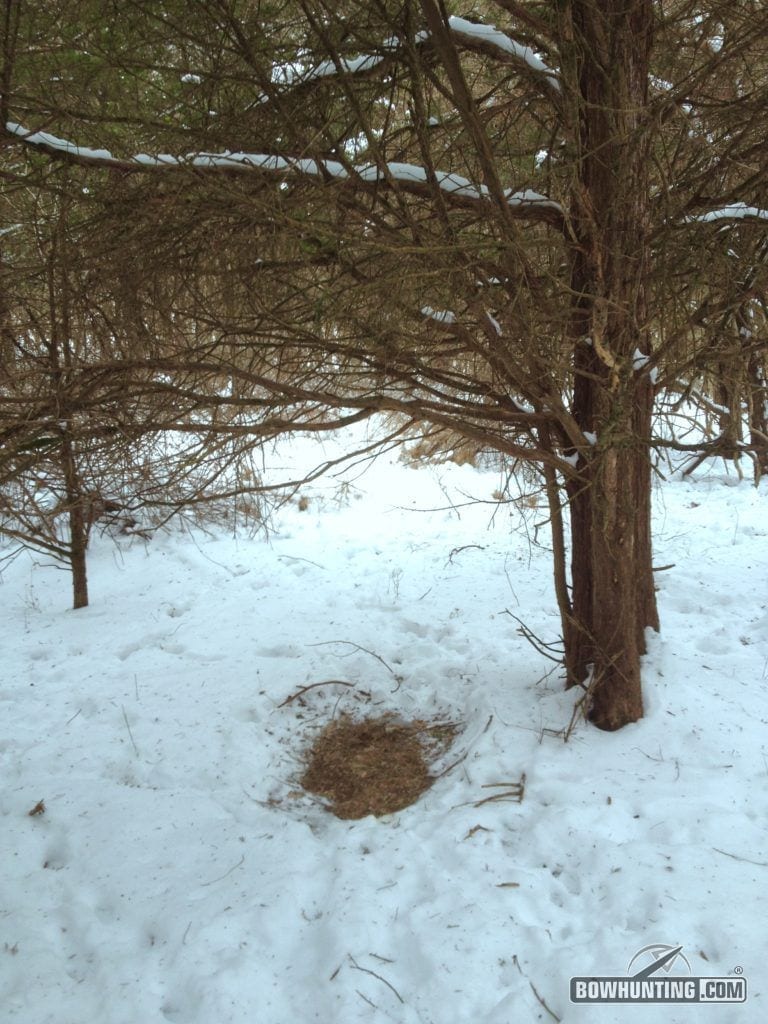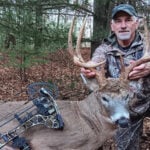With deer seasons now closed across the country, bowhunters are hanging up their gear to reflect upon another rush of seasons come and gone.
Some were blessed with the good fortune of harvesting a few deer, savoring the sweet bounty of a full freezer and perhaps even a fine set of antlers for the wall. Meanwhile, others weren’t so lucky and are now forced to swallow their misery in a steaming bowl of tag soup.
Regardless of success or failure, the closing of one chapter only gives hunters more incentive to begin preparing for the next one that follows. Now is the perfect time to put in a little low-key groundwork for next year. Here are a few off-season chores for the bowhunter…
Report Your Harvest
First, if you filled a tag, please make it a point to report your harvest to your state wildlife agency. Each state has a different method for collecting harvest records, but the process is always easy.
Whether reporting online, by mail, phone, or check station, it only takes a few minutes and helps provide a more accurate count of harvest totals. This is important for making future decisions on season dates, lengths and bag limits – regulations that affect us all.
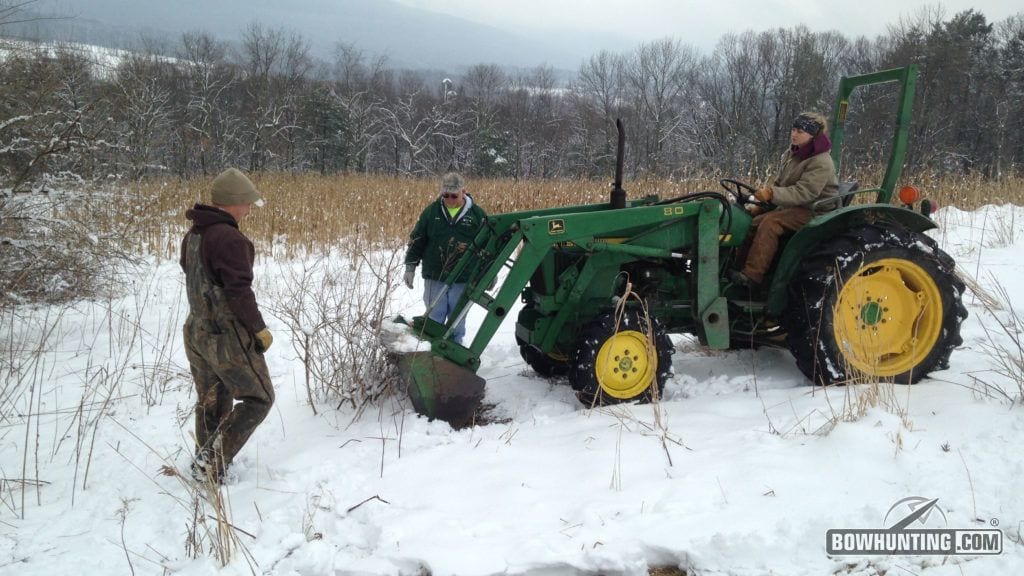
The off-season is a great time to knock out chores around the farm, as well as build landowner relationships.
Thank a Landowner
If you hunted private land, consider stopping by to personally thank the landowner for granting you permission to hunt this year. If you harvested a deer, try offering a little venison, or surprise them with an unexpected gift card to show your appreciation. This small gesture might help secure future permission in years to come.
Remove Your Stands
Hunters with tree stands on public lands should consider taking them down during the off-season. Leaving stands behind puts them at greater risk for theft or weather-related damages. Not to mention some states require stands be removed from state-owned property within a certain window of deer season in accordance with the law.
Carefully check all stands for wear and tear, replacing cables or straps as necessary. Touch up any shiny metallic areas with a flat drab spray paint, and then store them in a dry location such as a garage, shed, barn or basement.
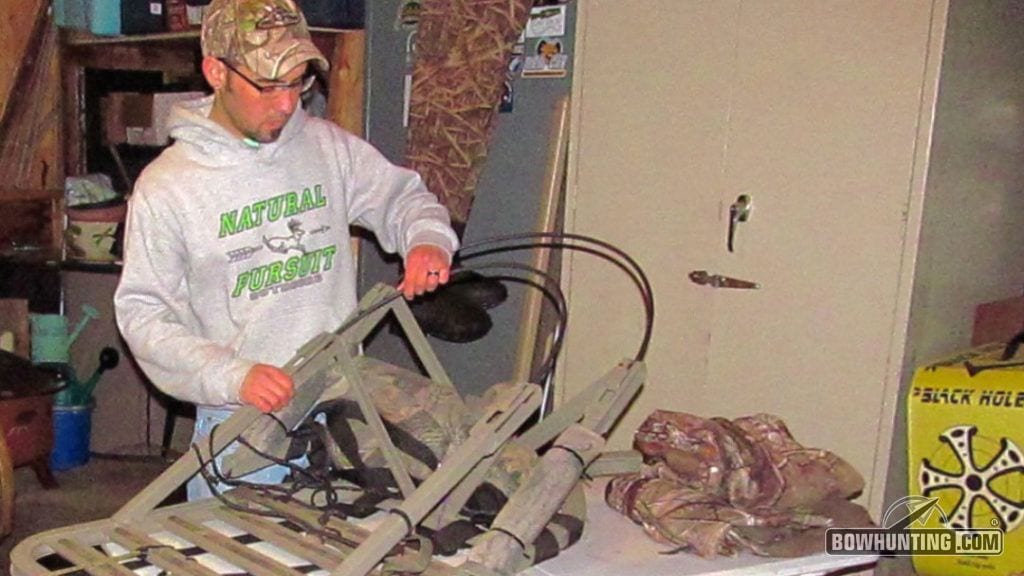
Be sure to give your stand a good inspection for damage before hanging it up for the off-season.
Clean and Store Hunting Clothes
Hunters should also give thought to storing their hunting gear in a clean, organized fashion so it makes next year’s pre-season ritual go all the more smoothly. Wash all clothing in a scent-free wash, ensure it is completely dry and store this clothing in a neat, airtight plastic container.
Large Tupperware bins are ideal containers for organizing hunting clothes. Designate three to be used at different times throughout the year. One for early season scent-free archery clothing, another for heavily insulated winter garments, and a third for lightweight spring gobbler or small game hunting apparel that doesn’t require a scent-free wash.
The bins are easy to stack, and they keep your garments safe from moisture, insects, rodents and household odors. If necessary, you can even label them or buy different colored bins to make them easily distinguishable from one another.
Check Your Gear
A thorough cleaning of all hunting equipment is also a wise decision prior to long-term storage. While doing so, take a quick inventory of what needs replaced or updated and begin budgeting accordingly for future gear purchases.
Some gear, such as fall-restraint harnesses and bowstrings, wear out over time and need to be replaced or they can seriously compromise safety. If an item needs updating, it is best to take care of it well in advance of the season. Putting it off may result in the temptation to make it last just one more year, which could be a costly mistake.
Get Organized
If you’re like me, you probably pursue a variety of game species. Therefore, some equipment is season-specific, such as turkey decoys used in the spring, or whitetail grunt tubes used in the fall. These items should be inventoried and neatly stowed with other appropriately matching gear for their intended species.
Designate a cabinet, drawer or cubby for all obvious matches, and label them. Though it might seem a bit obsessive at first, I promise it will save you time, effort and a long string of expletives when you can’t find that last minute item you’re looking for the night before the season opener.
Some gear, such as rangefinders, headlamps, GPS units or binoculars, can be used interchangeably for a variety of species. I like to keep these multi-use items in an easy-access location. The key is to be consistent with wherever you choose to store these items. Remember to return them after each outing, and they will not mysteriously disappear.
Scout Now
Post-season scouting is one of the best and easiest ways to learn more about how whitetails use the terrain
Scouting is often made easy in the off-season. in your local hunting area. A leisurely midday walk on a sunny weekend will reveal a wealth of information for those willing to put in the extra time and effort.
For the most part, the woods have been long-abandoned by a regular human presence, and with that, the deer return to a more relaxed routine. At this time of year, the main priorities of a whitetail include resting and eating, so focus on transition zones between cover and food sources.
The combination of bare vegetation and damp soil or fresh snow will blatantly reveal even the most obscure travel routes and escape trails when compared to other times of the year. Take advantage of this window to educate yourself on preferred bedding areas and movement patterns.
Don’t be afraid to pick out a new area of land to explore either. Having a fallback option once the season gets rolling is great if your primary hunting spots become unproductive or need a rest. Narrow down some areas online using satellite aerial images, and then go walk the property.
Carry a map, GPS or smart phone and mark the locations where deer traffic is evident. Look for natural pinch points or crossings and keep these areas in mind for next year’s stand placement.
Hang a Trail Cam Over Minerals
Now is also a great time to get trail cam photos of deer that survived the fall seasons. Hang a north facing trail cam over mineral supplements to take inventory of your local herd while providing nutrients essential for winter recovery without the added salt content. Minerals will help boost antler growth in bucks and aid in fawning of mothers-to-be. It’s the perfect location for some great photo opps.
Hunt For Sheds
By this point, shed hunters are likely already out scouring woodlots and farm fields for dropped antlers, hoping to harvest just one small memento from that big buck that got away.
This enjoyable activity is another great way for hunters to elongate their never-ending pursuit of whitetails into the offseason, while collecting even more intel on bucks that remain for next year. Besides, I’ve never met a deer hunter who isn’t thrilled to find the sheds of the buck that eluded him all season.
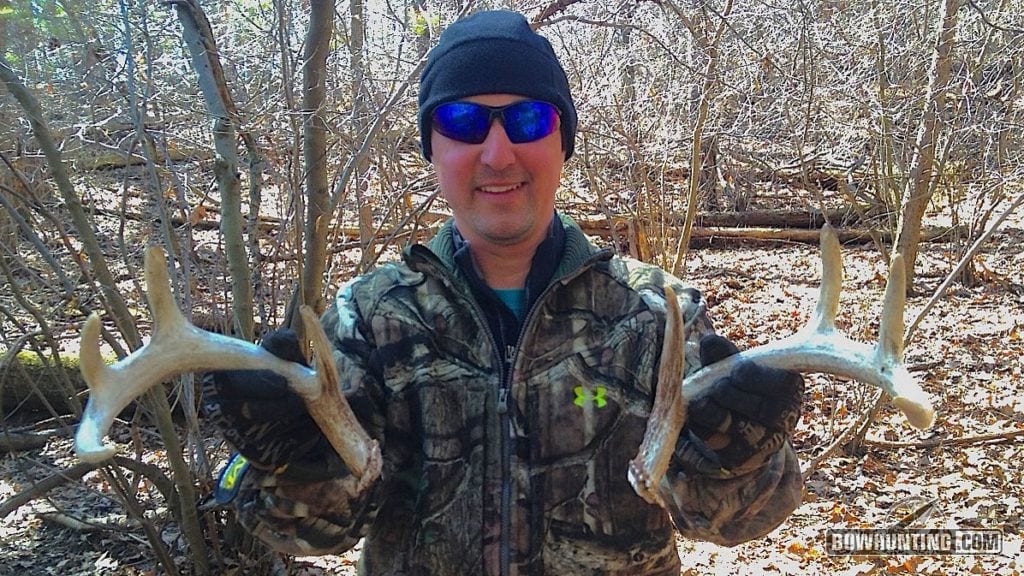
Shed hunting is a great off-season chore that helps you take inventory on next year’s lineup of bucks.
Improve Food Plots and Habitat
Late winter is the perfect time to make some adjustments in the layout of your hunting property. A small tractor or ATV and a chainsaw may be all it takes to dig out unwanted food plot growth, trim back field edges, drop a few treetops or clear new stand access or travel routes.
Think about all the tree stand sits when you thought, “Man, I wish the deer would walk over this way or that way,” then go make it happen by doing a few selective cuts and piling brush to force the deer where you want them.
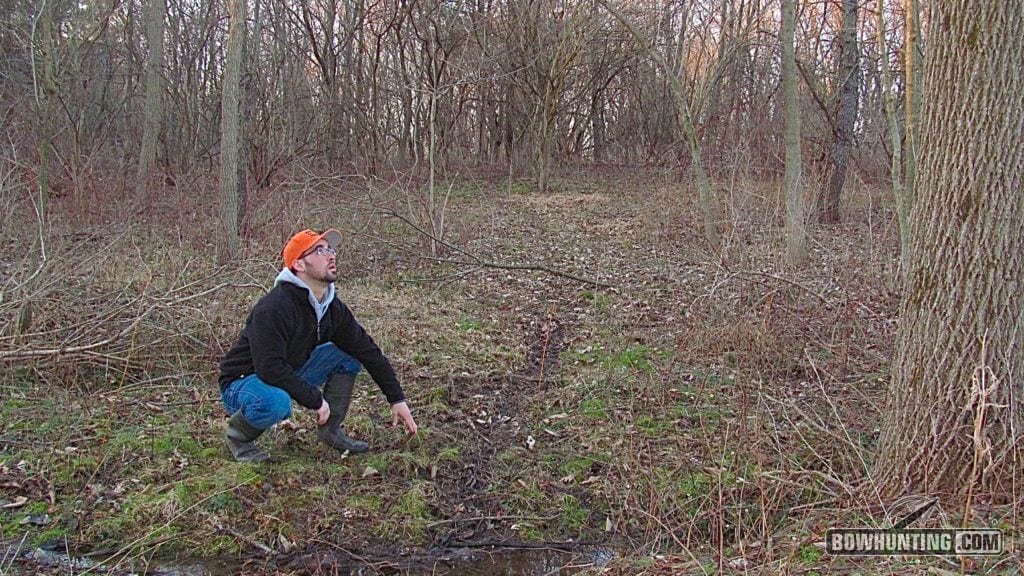
Now is the time to evaluate opportunities to tuck a hidey hole plot along popular deer travel routes.
Shoot Your Bow
Even when cold, damp weather looms outside there are countless opportunities for shooting one’s bow indoors. Numerous sportsmen’s clubs and archery shops offer indoor 3-D shoots, video archery or Vegas-style paper leagues year round. Grab your bow and keep shooting to stay sharp, even if it means shooting corner to corner in a garage or basement, just to maintain form and muscle memory.
Spend Time With Your Loved Ones
Just as important as all of the aforementioned activities, be sure to allocate some precious time to spend with those who matter most in your life. Deer season can be long and grueling – especially for our families when we’re away.
Make up for missed time by doing something special with your spouse and/or kids. That too will pay off when the rut rolls around next year and you’re hitting the stand every chance you’ve got.
Better yet, include your family on some of your off-season to-do list activities. Not only can it be a lot of fun for everyone involved, but it also makes crossing off those items even more satisfying when shared with the ones you love.

